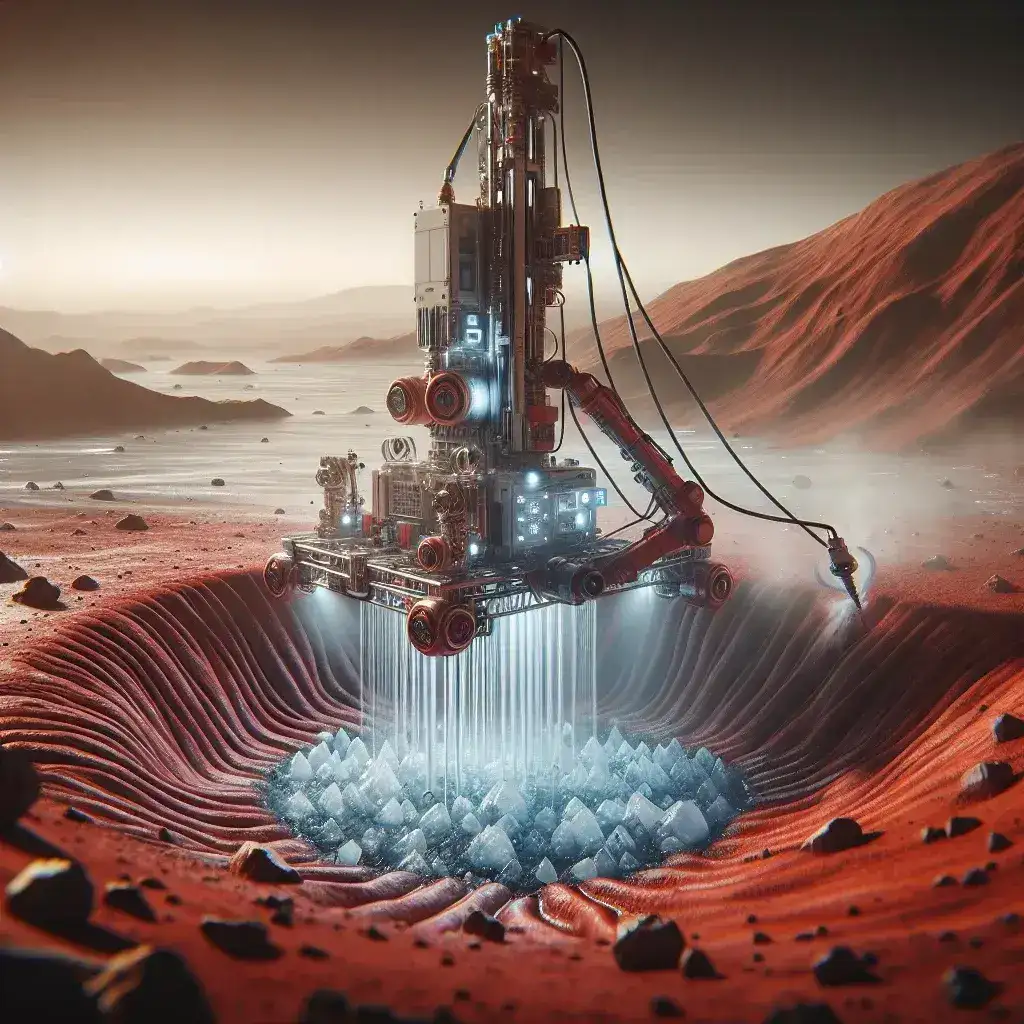Introduction
As humanity stands on the brink of deep space exploration, NASA has initiated a series of tests aimed at unlocking the mysteries of Mars. One of the most intriguing aspects of this endeavor is the pursuit of water ice on the Martian surface. Water is a fundamental resource for potential human habitats, scientific research, and even propulsion systems. In this article, we delve into NASA’s innovative robotic drilling rigs, their functionality, and their significance in accessing Martian water ice.
The Importance of Water Ice on Mars
Water is the essence of life, and its presence on Mars holds the key to numerous possibilities. The various applications of water on Mars include:
- Supporting Human Life: Water is essential for drinking, agriculture, and sanitation. Accessing water ice could facilitate human settlements on Mars.
- Fuel Production: Water can be converted into hydrogen and oxygen, which are crucial for rocket fuel.
- Scientific Research: Studying water ice can provide insights into Mars’ geological history and climate.
- Future Colonization: Establishing a sustainable human presence on Mars hinges significantly on securing local resources.
Nasa’s Robotic Drilling Rig: A Marvel of Engineering
The robotic drilling rigs developed by NASA are designed to reach depths where water ice is believed to exist. Here’s a closer look at their features:
1. Advanced Technology
The drilling rigs are equipped with cutting-edge technology that includes:
- High-Precision Drilling: The rigs utilize advanced algorithms that allow them to drill with precision, minimizing the risk of damaging the surrounding environment.
- Remote Operation: Given the vast distance between Earth and Mars, these rigs can be operated remotely, showcasing NASA’s advancements in robotics.
2. Mobility and Adaptability
Designed to traverse the challenging Martian terrain, these rigs feature:
- Robust Design: Built to withstand extreme temperatures and dust storms, ensuring functionality in harsh conditions.
- Mobility Systems: Capable of navigating rocky and uneven surfaces, allowing access to various locations.
3. Energy Efficiency
The rigs also prioritize energy conservation:
- Solar Power: Equipped with solar panels to harness energy from the sun, crucial for Mars’ long days.
- Low Power Consumption: Utilizing efficient motors and systems ensures longevity and reduces operational costs.
The Testing Process
Nasa’s testing of these robotic drilling rigs involves several stages:
1. Simulation and Prototyping
Before actual deployment, NASA conducts extensive simulations to model the environments these rigs will face. Prototypes are built and tested in controlled conditions that replicate Martian soil and climate.
2. Field Tests
Field tests are conducted to evaluate how these rigs perform in real-world situations. This includes:
- Drilling Depth: Determining how deep the rigs can drill and the quality of the samples retrieved.
- Environmental Impact: Studying the effects the drilling may have on the Martian environment.
3. Data Analysis
Data collected during these tests is analyzed to improve the design and functionality of the rigs. This iterative process ensures that NASA develops the most effective drilling technology.
Future Implications
The successful deployment of these robotic drilling rigs could pave the way for numerous advancements in space exploration:
1. Human Settlements
The ability to access water ice could support permanent human habitats, making long-term missions on Mars feasible. This is crucial for NASA’s plans to send astronauts to Mars by the 2030s.
2. Scientific Discoveries
Accessing water ice could lead to groundbreaking scientific discoveries about Mars’ history and its potential to support life, past or present.
3. Technological Innovations
The technologies developed for these rigs could have applications beyond Mars, potentially benefiting Earth-based industries.
Challenges Ahead
Despite the progress made, several challenges remain:
1. Harsh Environment
The Martian environment poses significant challenges, including extreme temperatures and dust storms that can impede operations.
2. Communication Delays
With a communication delay of up to 22 minutes between Earth and Mars, any operations must be autonomously managed, complicating real-time control.
3. Resource Limitations
Ensuring that the drilling rigs have adequate power and maintenance capabilities while on Mars will be critical for their success.
Conclusion
Nasa’s tests of robotic drilling rigs for accessing water ice on Mars represent a significant leap forward in space exploration technology. The ability to harness local resources is fundamental for future human missions and colonization efforts on the Red Planet. As NASA continues to refine these advanced technologies, the prospects of human life on Mars become increasingly tangible, potentially transforming our understanding of life beyond Earth.

Leave a Reply